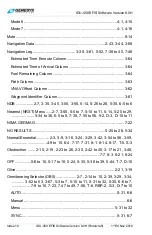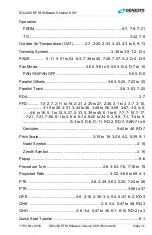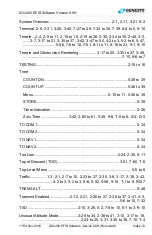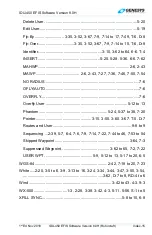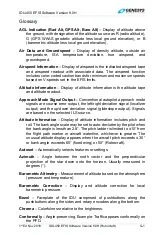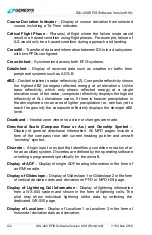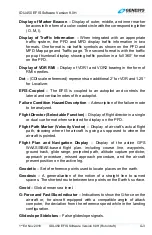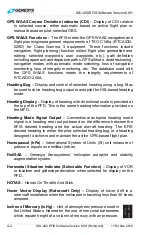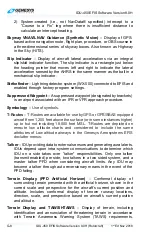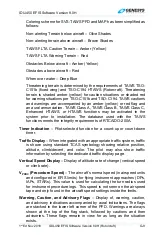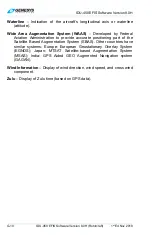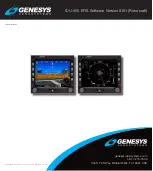
IDU-450 EFIS Software Version 8.0H
1
st
Ed Nov 2018 IDU-450 EFIS Software Version 8.0H (Rotorcraft)
G-9
Coloring scheme for SVS-TAWS PFD and MAP has been simplified as
follows:
Non-alerting Terrain below aircraft – Olive Shades
Non-alerting terrain above aircraft – Brown Shades
TAWS FLTA Caution Terrain – Amber (Yellow)
TAWS FLTA Warning Terrain – Red
Obstacles Below aircraft – Amber (Yellow)
Obstacles above aircraft – Red
When over water – Deep Blue
Threatening terrain is determined by the requirements of TAWS TSO-
C151b (fixed wing) and TSO-C194 HTAWS (Rotorcraft). Threatening
terrain is shaded amber (yellow) for caution situations or shaded red
for warning situations per TSO-C151b and TSO-C194. TAWS cautions
and warnings are accompanied by an amber (yellow) or red flag and
an aural annunciation. TAWS Class A, TAWS Class B, TAWS Class C,
Enhanced HTAWS, or HTAWS functions may be activated in the
system prior to installation. The database used with the TAWS
functions meets the integrity requirements of RTCA/DO-200A.
Timer Indication
– Pilot-selected function for a count-up or count-down
timer.
Traffic Display
– When integrated with an appropriate traffic system, traffic
is shown using standard TCAS symbology showing relative position,
altitude, climb/decent, and color. The pilot may also show traffic
information by selecting the dedicated traffic display page.
Vertical Speed Display
– Display of altitude rate of change (vertical speed
or climb rate).
V
PROC
(Procedure Speed)
– The aircraft’s normal speed (in airspeed units
and configured in EFIS limits) for flying instrument approaches (DPs,
IAPs, STARs). This value is used for calculating the turn radius used
for instrument procedure legs. This speed is not seen on the airspeed
tape and only found in the aircraft speed settings inside the limits.
Warning, Caution, and Advisory Flags
– Display of, warning, caution,
and advisory indications accompanied by aural indications. The flags
are stacked in the lower left corner of the PFD. Warnings are always
shown at the top of the flag stack, followed by cautions and then
advisories. These flags remain in view for as long as the situation
exists.

